Some of us take a kind of “I eat to live” rather than an “I live to eat” approach to gadgets. They’re tools that help you get things done, not something you want to invest a lot of time or money in. If that’s you — and there’s no judgment here from a certifiable gadget nerd — then you can probably think of more worthwhile ways to spend $1,000 than on a phone.
Technology
Best cheap phone: five smartphones for under $500
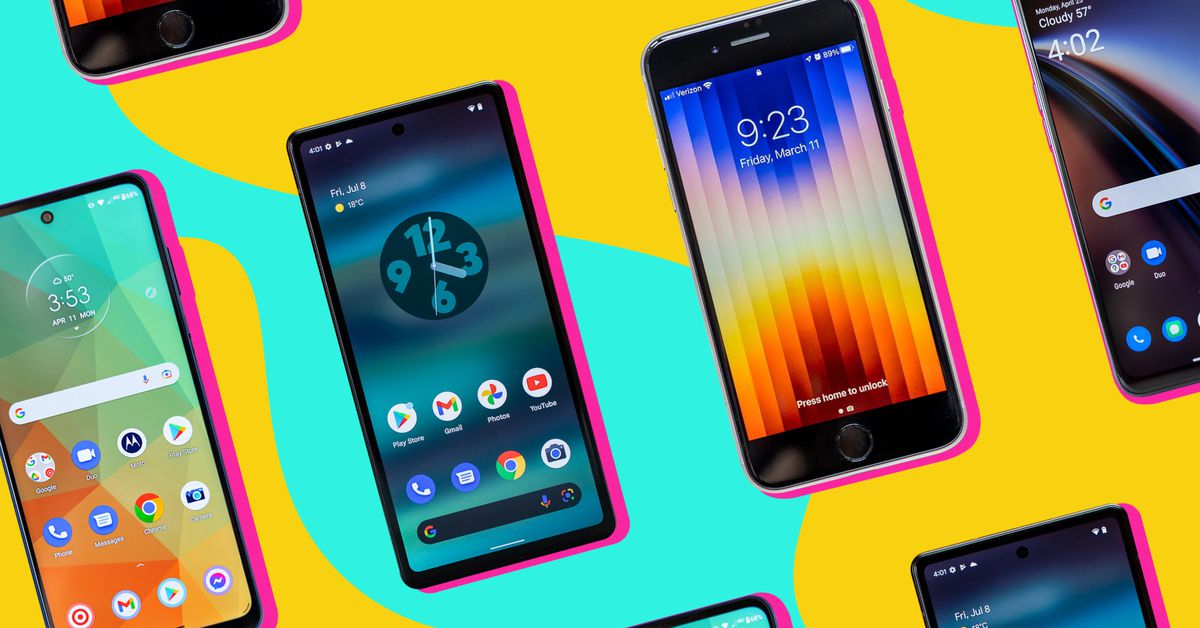
Budget phones to the rescue. These devices are roughly $500 or under, and they’re more capable than ever before. You won’t get all the bells and whistles, but you will save a little money to spend on, I don’t know, actual bells and whistles. It’s your world.
Many of our picks run about $400 or $500, but there are great options for $300 and under, too. You can find a bright, high-definition OLED screen or a battery that lasts for days. If you can hone in on the one or two features that are most important to you and you’re willing to compromise elsewhere, you can get a phone that suits your needs for half the price of a flagship.
What compromises can you expect from a budget phone? Some combination of the following: slower processors, less storage, and lousier cameras than flagship phones, almost across the board. Many have lower-resolution screens, and most lack official water-resistance ratings, wireless charging, and NFC chips for contactless payment.
The best iPhone under $500
Screen: 4.7-inch, 1334p LCD / Processor: A15 Bionic Cameras: 12-megapixel f/1.8 with OIS, 7-megapixel selfie / Charging: 20W wired, 7.5W wireless / Weather-resistance rating: IP67
If your budget has a strict $500 cap and you’re looking for a new iPhone, the choice is easy. The 2022 iPhone SE is the only new iPhone under $500. It’s the least expensive way to get into the iOS ecosystem and it’ll do the job, but I would strongly encourage anyone looking at the SE to consider whether it’s doable to spend a bit more on an iPhone 14, now priced at $599.
The important thing to know about the SE is that it comes with a very small, very dated 4.7-inch screen. It’s the same size as the one on the iPhone 6, and it’s starting to feel cramped in an age when apps and web pages are designed for bigger screens. The SE’s big bezels make the device look dated, too, but the usability of a small screen will be a bigger factor over the years to come.
That’s the biggest knock against the SE — and it’s an important one. But if you’re not worried about a cramped screen, then the SE has a lot of upsides. Its A15 processor is the same as the one in the iPhone 13 Pro Max, so performance is very good.
There’s IP67 waterproofing and wireless charging — both uncommon in this price range — and even though it uses an older 12-megapixel camera, it takes very nice photos and high-quality video clips. The camera has no night mode, which is a curious omission — basically every other midrange phone offers some sort of low-light photo mode, and the phone’s processor is certainly up to the task. Apple gonna Apple.
The best Android phone under $500
Screen: 6.1-inch, 1080p OLED, 120Hz / Processor: Tensor G3 Cameras: 64-megapixel f/1.89 with OIS, 13-megapixel ultrawide, 13-megapixel selfie / Battery: 4,492mAh / Charging: 18W wired, 7.5W wireless / Weather-resistance rating: IP67
Google offers some very good high-end phones in the Pixel 9, 9 Pro and 9 Pro XL, but it’s the company’s budget phone that makes the most sense. For $500, the Pixel 8A offers a whole lot of what makes its pricier siblings good, but at roughly half the cost.
It’s a modest update over the Pixel 7A, which you can still buy, but the 8A comes with one big upgrade over the previous generation: seven years of OS and security updates. If you’re the kind of person who likes to hang onto their device for a long time, that’s huge — especially in the budget category where other phones might only come with one or two platform upgrades.
The 8A is also Google’s first budget phone to come with a 120Hz display, so scrolling and animations look super smooth. You also get wireless charging and an IP67 rating for protection against water immersion. The camera system is reliable, but it’s the most obvious place where Google had to make some compromises to keep the price low. It’s a fine all-around camera, but stepping up to one of the latest Pixel models gets you improved low light performance, an updated ultrawide camera, and a whole lot of AI-powered features.
The best budget phone that performs like a flagship
Screen: 6.78-inch, 1264 x 2780 120Hz OLED / Processor: Snapdragon 8 Gen 2 Cameras: 50-megapixel f/1.8 with OIS, 8-megapixel ultrawide, 2-megapixel macro, 16-megapixel selfie / Battery: 5,500mAh / Charging: 80W wired / Weather-resistance rating: IP64
The OnePlus 12R is $500, but it could easily trick you into thinking it costs twice as much. It comes with a very big, very nice screen, with refresh rates that go up to 120Hz and all the way down to 1Hz, making for a smooth scrolling experience when you need it and savings on battery life when you don’t. It’s a feature rarely seen on a phone under $800.
The 12R is equipped with the Snapdragon 8 Gen 2 chipset, which is a generation behind 2024’s processor du jour, the 8 Gen 3. But the 8 Gen 2 still whips — it’s hard to throw anything at this phone that it can’t handle. Less good: the 12R’s IP64 rating, which means it’s splash resistant but not fully water immersible, like the Pixel 8A.
Fast charging is kind of OnePlus’ trademark, and the 12R stays true to the brand with up to 80W fast wired charging in the US (it’s up to 100W in other regions). It’s nice if you want to charge your phone on a more compressed schedule, like during your morning routine rather than at night.
Personally, I’d rather have slower wired charging if it meant I could have a feature that’s not present on the 12R: wireless charging. That is, once again, something the Pixel 8A offers. But that’s the beauty of the 12R — it knows what it is and what it isn’t. And if a low-cost phone with a big, high-quality screen and excellent performance is what you’re after, then the 12R is it.
The best phone under $400
Screen: 6.1-inch, 1080p OLED / Processor: Tensor Cameras: 12-megapixel f/1.7 with OIS, 8-megapixel selfie / Battery: 4,410mAh / Charging: 18W wired / Weather-resistance rating: IP67
The Pixel 6A probably isn’t long for this world. It was announced in 2022, Google no longer sells it new, and with the arrival of the Pixel 8A it’s now two generations behind. But the 6A is hanging around at third-party retailers like Amazon, and if you can score one for $300, it’s a heck of a deal. It’s scheduled to get one more OS upgrade and three more years of security updates, which is a decent return on that investment.
The phone’s biggest asset is Tensor, the custom-built chipset Google used in the company’s 2021 flagships, the 6 and 6 Pro. Not only does it enable good overall performance now, but it also means that the 6A will keep up for many years to come — it’ll receive security patches until at least July 2027. The 6A also comes with an IP67 water-resistance rating, so it’s still a good all-around bet if you want a budget phone that will last.
The 6A’s 6.1-inch 1080p OLED offers a standard 60Hz refresh rate. It wasn’t too impressive for the phone’s original $449 retail price, but for under $400, it’s one of the better screens out there. Unfortunately, the fingerprint sensor under the display is also on the slow side. It’s not unusable, but it’s noticeably a beat slower than the best fingerprint sensors out there.
The 6A uses the same 12-megapixel standard wide camera as many Pixel phones before it, which is still a very good camera — especially for the midrange class. The phone’s 4,410mAh battery is on the small side, but overall battery performance is better than its size would suggest.
The best cheap phone for a long-term relationship
Screen: 6.6-inch, 1080p resolution, 120Hz OLED / Processor: Exynos 1380 Cameras: 50-megapixel f/1.8 with OIS, 8-megapixel ultrawide, 5-megapixel macro, 13-megapixel selfie / Battery: 5,000mAh / Charging: 25W wired / Weather-resistance rating: IP67
The Samsung Galaxy A35 5G comes with surprisingly strong specs for its $399 price. They’re the kind of features you won’t really spot from the outside, but they’re important, particularly its IP67 rating for dust and water resistance. Unlike virtually every other phone at this price, the A35 5G is built to withstand water immersion, so you don’t need to sweat it if your phone lands in a toilet bowl or puddle.
Here’s another unexciting spec: four years of OS updates and five years of security updates. That’s not the very best in the budget category — the Pixel 8A takes that honor with seven years of updates — but it’s much better than the two or three years we typically see in phones well under $500.
The camera is lackluster; it’s fine in bright light but struggles in dim and mixed indoor lighting. It doesn’t have the strongest processing performance you can find under $500, either, and the Samsung-made Exynos processor occasionally stutters when quickly bouncing between tasks. I was horrified — horrified! — when I accidentally texted my husband one of the automatically generated replies because it popped up at the last moment as I was trying to tap on something else. These things don’t happen when everything loads quickly.
But overall, it’s a compelling package — especially with a big, crowd-pleasing OLED display and strong battery performance. If you’re a light user and not fussy about camera quality, the A35 5G offers some upgrades that make a real difference in the long term.
Other budget phones we tested
The 2024 Motorola Moto G Power has all the makings of a good budget phone, including a lovely vegan leather exterior and wireless charging. But it’s loaded with bloatware of the worst kind, and that alone disqualifies it from our recommendations. Read our impressions.
We also tested the OnePlus Nord N300, which doesn’t make an appearance among our recommendations. The N300 is very affordable at $228 but cuts too many corners to include fast charging. The pricier 12R that snags our recommendation above offers much better overall performance. Read our review.
If your budget has some wiggle room, there are a couple of $600 phones worth considering that are just outside the scope of this guide. The Samsung Galaxy S23 FE is a late addition to the S23 lineup, one that offers a telephoto lens and a great screen but lacks the AI features found on the recently announced S24 FE. And for something quite different, the Nothing Phone 2 is an option with its sleek appearance and flashy interface (literally, it flashes) — just know that it’s not fully compatible with Verizon’s network.
Update, September 26th: Adjusted pricing and added a mention of the Samsung Galaxy S24 FE, which is now available starting at $649.99.
Technology
Samsung unboxes the all-new Galaxy S24 FE: Video
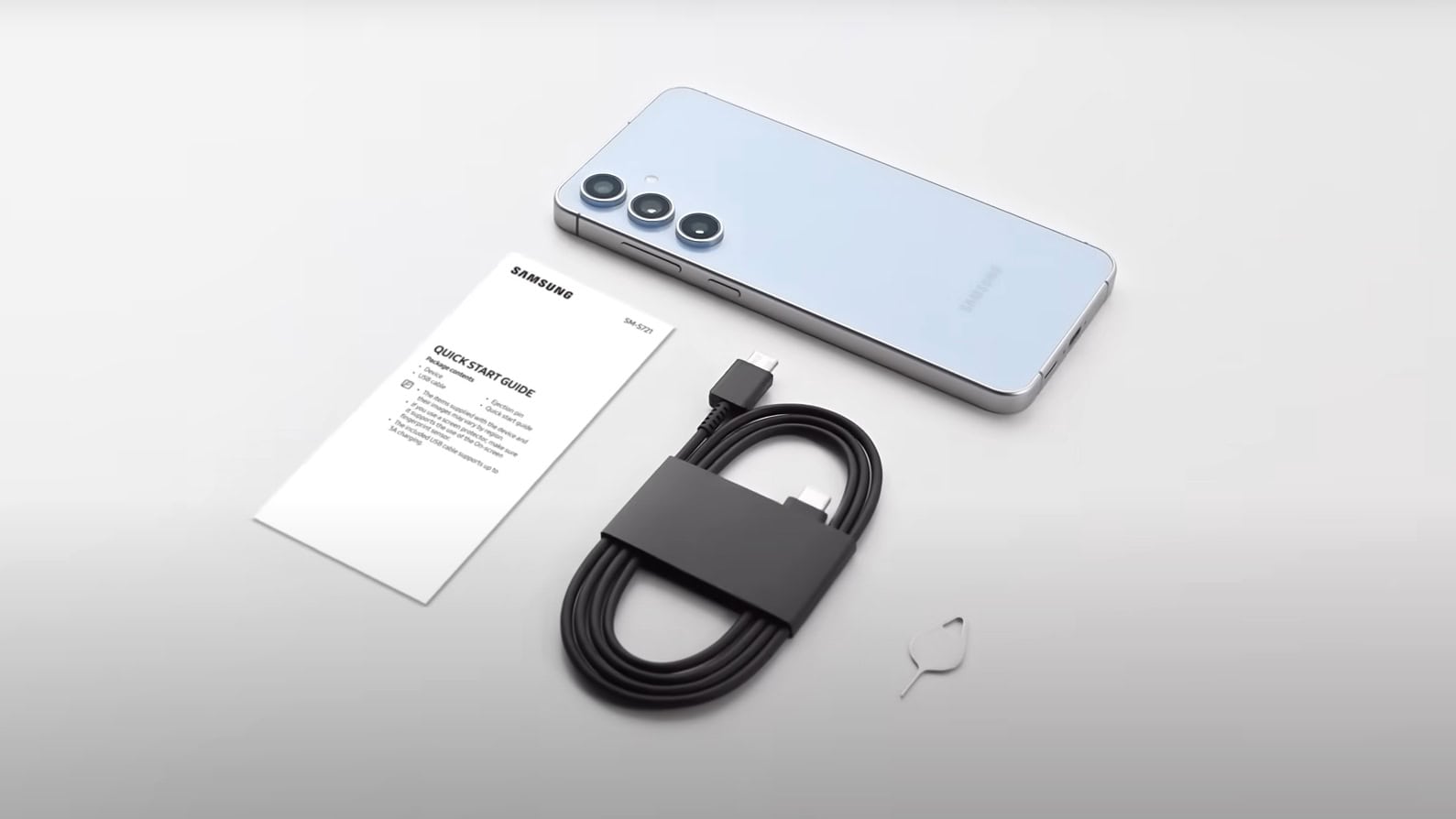
The Samsung Galaxy S24 FE was announced yesterday, and the company has just unboxed it. This unboxing was presented in the form of a promo video which surfaced on the company’s official YouTube channel.
The Galaxy S24 FE unboxing video is now live on YouTube
The unboxing video has a duration of around a minute and a half, and it’s embedded at the very end of the article. It not only shows you what sits in the box, but you get to see all the colors of the device. On top of that, some features are highlighted here too.
In addition to the phone itself, and some paperwork, a SIM ejection pin is included, and a charging cable. That’s a USB-C to USB-C charging cable if you were wondering. No, the charger is not included in the box.
The phone comes in Blue, Graphite, Gray, Mint, and Yellow colors, in case you missed the memo yesterday. This video will show you the device from all angles. That way you’ll see its flat sides, which is a change from last year’s model. The device is also larger this time around, as it has a larger display.
Samsung claims this phone offers “stunning low-light portraits”
Samsung says that the Galaxy S24 FE can provide “stunning low-light portraits” thanks to ProVisual Engine. The cameras are highlighted in the video in general, and the same goes for the SoC. This phone is fueled by the Exynos 2400e chip.
A 6.7-inch AMOLED display with a 120Hz refresh rate is used this time around, instead of a 6.4-inch panel. It’s also brighter now, as it has a peak brightness of 1,900 nits. Gorilla Glass Victus+ protects that display, by the way.
The device is also water and dust-resistant, and so on. If you’d like to know more about the Galaxy S24 FE, check out our original announcement. You can also pre-order the device as we speak, if you’re interested.
Science & Environment
WTI heads for weekly loss as supplies rise

U.S. crude oil on Friday was on pace for its first weekly loss in three weeks, as the prospect of growing oil supplies from Saudi Arabia overshadowed China’s efforts to stimulate its economy.
The U.S. benchmark West Texas Intermediate is down nearly 6% this week, while global benchmark Brent has pulled back nearly 4%. Prices have fallen even as conflict in the Middle East escalates, with Israel and Hezbollah trading blows in Lebanon.
“It is amazing to see that … war doesn’t affect the price, and that’s because there’s been no disruption,” Dan Yergin, vice chairman of S&P Global, told CNBC’s “Squawk Box” Friday.
“There’s still over 5 million barrels a day of shut in capacity in the Middle East,” Yergin said.
Here are Friday’s energy prices:
- West Texas Intermediate November contract: $67.51 per barrel, down 16 cents, or 0.24%. Year to date, U.S. crude oil is down more than 5%.
- Brent November contract: $71.37 per barrel, off 23 cents, or 0.32%. Year to date, the global benchmark is down about 7%.
- RBOB Gasoline October contract: $1.9596 per gallon, little changed. Year to date, gasoline is down about 7%.
- Natural Gas November contract: $2.774 per thousand cubic feet, up 0.76%. Year to date, gas is up about 10%.
Oil sold off Thursday on a report that Saudi Arabia is committed to increasing production later this year, even if it results in lower prices for a pro-longed period.
OPEC+ recently postponed planned output hikes from October to December, but analysts have speculated that the group might delay the hikes again because oil prices are so low.
The oil selloff erased gains from earlier in the week after China unveiled a new round of economic stimulus measures. Soft demand in China has been weighing on the oil market for months.
“The thing that’s dominated the market is the weakness in China. Half the growth in world oil demand over a number of years has simply been in China, and it hasn’t been happening,” Yergin said.
“The big question is, stimulus, will you see a recovery in China,” he said. “That’s what the market is struggling with.”
Servers computers
42U Adjustable Depth Open Frame 4 Post Server Rack Cabinet – 4POSTRACK42 | StarTech.com
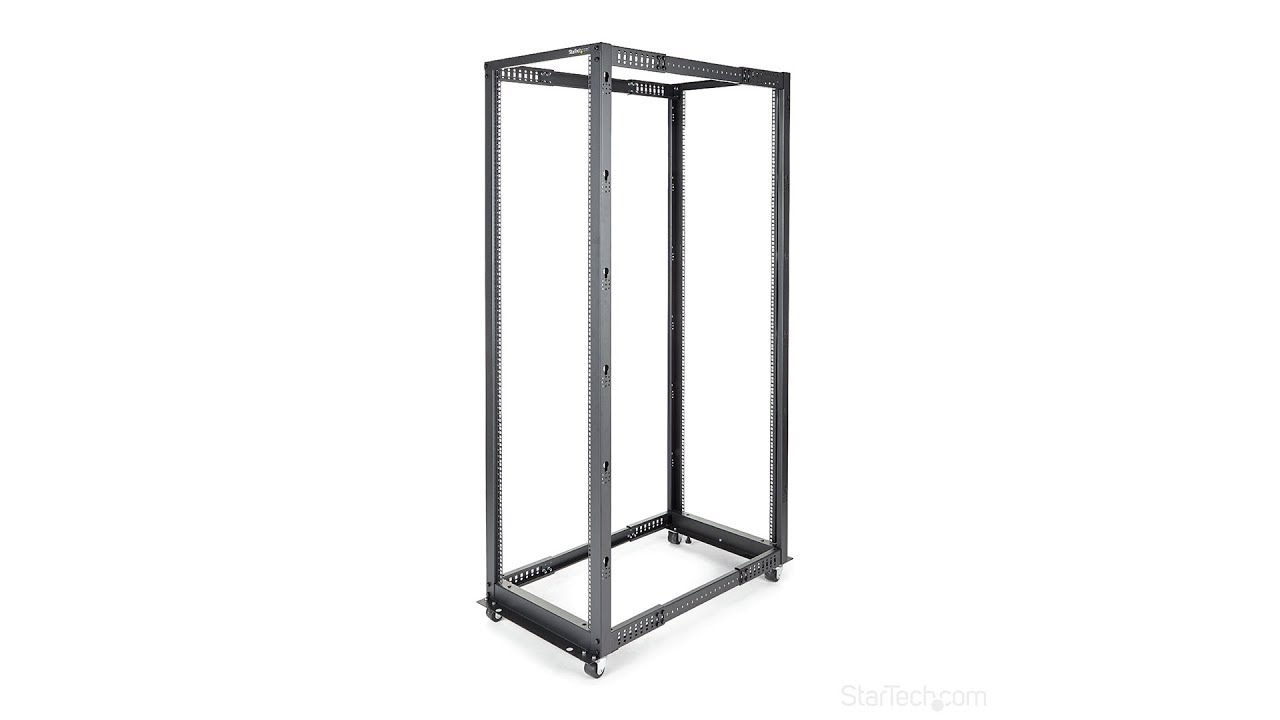
The 4POSTRACK42 42U Server Rack lets you store your servers, network and telecommunications equipment in a sturdy, adjustable depth open-frame rack.
Designed with ease of use in mind, this 42U rack offers easy-to-read markings for both rack units (U) and depth, with a wide range of mounting depth adjustments (22 – 40in) that make it easy to adapt the rack to fit your equipment.
This durable 4-post rack supports a static loading capacity of up to 1320lbs (600kg), and offers compliance with several industry rack standards (EIA/ECA-310, IEC 60297, DIN 41494) for a universal design that’s compatible with most rack equipment.
For a complete rack solution that saves you time and hassle, the rack includes optional accessories such as casters, leveling feet and cable management hooks. The base is also pre-drilled for securing the rack to the floor if needed, providing you with many options to customize the rack to fit your environment.
Backed by a StarTech.com 2-year warranty and free lifetime technical support.
To learn more visit StarTech.com
source
Technology
Intel reportedly rebuffed an offer from ARM to buy its product unit
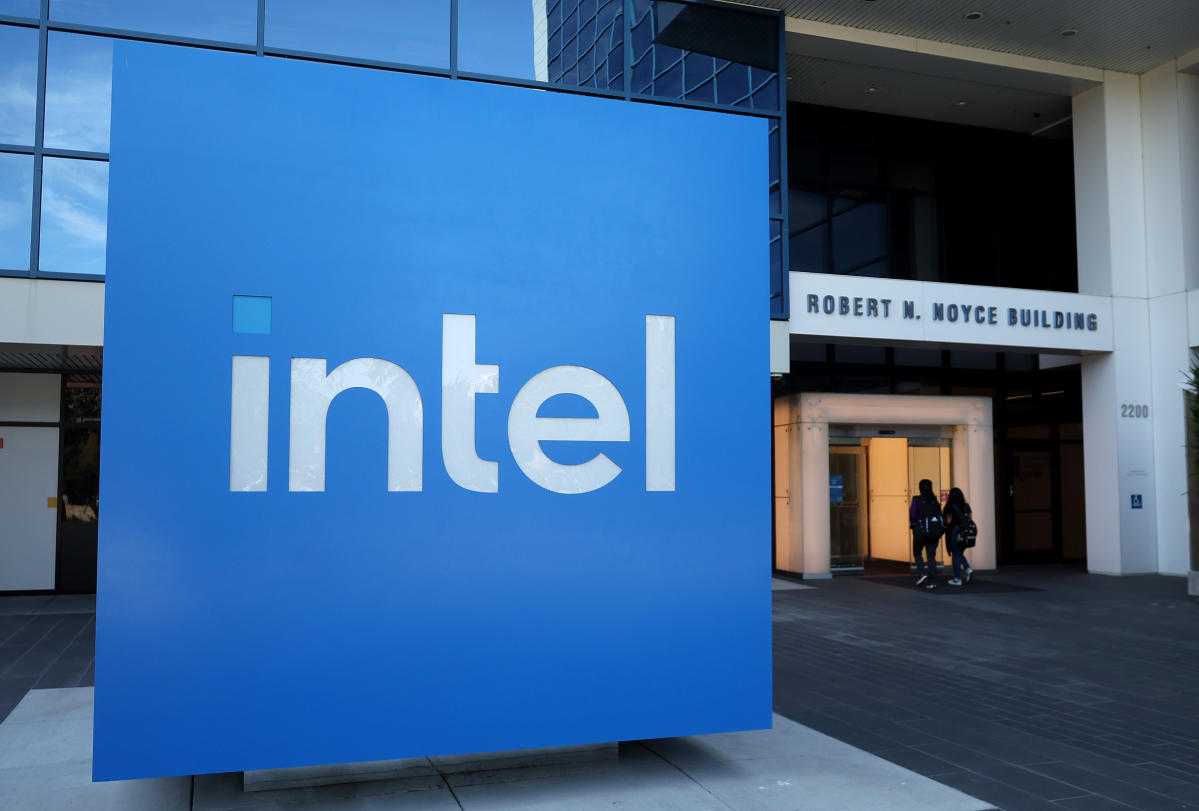
Intel’s fortunes have declined so rapidly over the past year that chip designer ARM made a “high level inquiry” about buying its crown jewel product unit, Bloomberg reported. However, Intel said the division wasn’t for sale and turned down the offer, according to an unnamed insider.
There are two main units inside Intel, the product group that sells PC, server and networking chips and a chip manufacturing foundry. ARM had no interest in Intel’s foundry division, according to Bloomberg‘s sources. ARM and Intel representatives declined to comment.
Intel’s fortunes have been on the wane for years, but the decline over the last 12 months has been especially dramatic. Following a net $1.6 billion loss in Q2 2024, the company announced that it was laying off 15,000 employees as part of a $10 billion cost reduction plan. Last week, the company also revealed plans to transform its ailing foundry business into an independent subsidiary. Intel lost half its market value last year and is now worth $102.3 billion.
ARM sells its processor designs to Qualcomm, Apple and other manufacturers (mostly for mobile phones) but doesn’t build any chips itself. Purchasing Intel’s product division would completely transform its business model, though that scenario seems highly improbable.
With Intel wounded at the moment, rivals have been circling. Qualcomm also expressed interest in taking over Intel recently, according to a report from last week. Any mergers related to ARM and Qualcomm would be regulatory nightmares, but the fact that the offers exist at all shows Intel’s vulnerability.
Intel has other avenues to boost investment. Apollo Global Management (the owner of Yahoo and Engadget) has offered to invest as much as $5 billion in the company, according to a recent Bloomberg report. Intel also plans to sell part of its stake in chip-maker Altera to private equity investors.
Servers computers
Wallmount Rack Server 9U/Rak Server Ukuran 9U Single Glass Door #servers #komputer
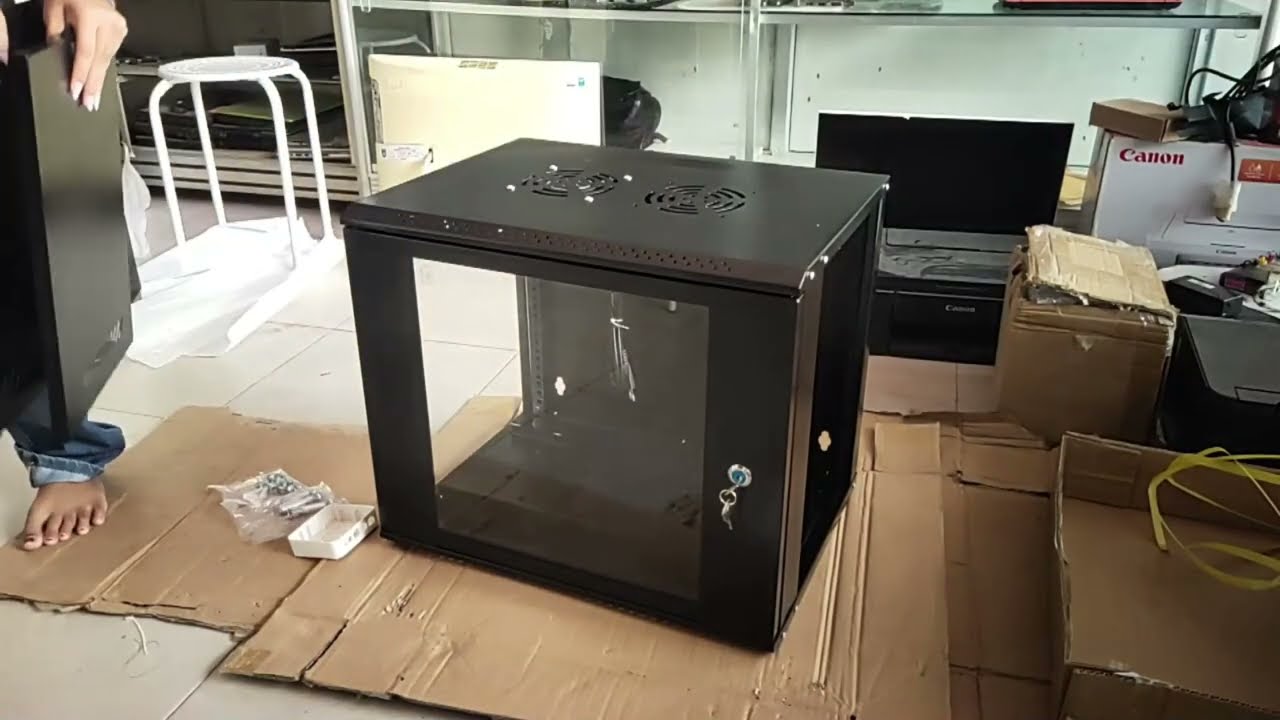
Wallmount Rack Server 9U/Rak Server Ukuran 9U Single Glass Door Di rakit oleh siswa dan siswi jurusan teknik komputer jarngan .
source
Technology
From cost center to competitive edge: The strategic value of custom AI Infrastructure

Join our daily and weekly newsletters for the latest updates and exclusive content on industry-leading AI coverage. Learn More
This article is part of a VB Special Issue called “Fit for Purpose: Tailoring AI Infrastructure.” Catch all the other stories here.
AI is no longer just a buzzword — it’s a business imperative. As enterprises across industries continue to adopt AI, the conversation around AI infrastructure has evolved dramatically. Once viewed as a necessary but costly investment, custom AI infrastructure is now seen as a strategic asset that can provide a critical competitive edge.
Mike Gualtieri, vice president and principal analyst at Forrester, emphasizes the strategic importance of AI infrastructure. “Enterprises must invest in an enterprise AI/ML platform from a vendor that at least keeps pace with, and ideally pushes the envelope of, enterprise AI technology,” Gualtieri said. “The technology must also serve a reimagined enterprise operating in a world of abundant intelligence.” This perspective underscores the shift from viewing AI as a peripheral experiment to recognizing it as a core component of future business strategy.
The infrastructure revolution
The AI revolution has been fueled by breakthroughs in AI models and applications, but those innovations have also created new challenges. Today’s AI workloads, especially around training and inference for large language models (LLMs), require unprecedented levels of computing power. This is where custom AI infrastructure comes into play.
>>Don’t miss our special issue: Fit for Purpose: Tailoring AI Infrastructure.<<
“AI infrastructure is not one-size-fits-all,” says Gualtieri. “There are three key workloads: data preparation, model training and inference.” Each of these tasks has different infrastructure requirements, and getting it wrong can be costly, according to Gualtieri. For example, while data preparation often relies on traditional computing resources, training massive AI models like GPT-4o or LLaMA 3.1 necessitates specialized chips such as Nvidia’s GPUs, Amazon’s Trainium or Google’s TPUs.
Nvidia, in particular, has taken the lead in AI infrastructure, thanks to its GPU dominance. “Nvidia’s success wasn’t planned, but it was well-earned,” Gualtieri explains. “They were in the right place at the right time, and once they saw the potential of GPUs for AI, they doubled down.” However, Gualtieri believes that competition is on the horizon, with companies like Intel and AMD looking to close the gap.
The cost of the cloud
Cloud computing has been a key enabler of AI, but as workloads scale, the costs associated with cloud services have become a point of concern for enterprises. According to Gualtieri, cloud services are ideal for “bursting workloads” — short-term, high-intensity tasks. However, for enterprises running AI models 24/7, the pay-as-you-go cloud model can become prohibitively expensive.
“Some enterprises are realizing they need a hybrid approach,” Gualtieri said. “They might use the cloud for certain tasks but invest in on-premises infrastructure for others. It’s about balancing flexibility and cost-efficiency.”
This sentiment was echoed by Ankur Mehrotra, general manager of Amazon SageMaker at AWS. In a recent interview, Mehrotra noted that AWS customers are increasingly looking for solutions that combine the flexibility of the cloud with the control and cost-efficiency of on-premise infrastructure. “What we’re hearing from our customers is that they want purpose-built capabilities for AI at scale,” Mehrotra explains. “Price performance is critical, and you can’t optimize for it with generic solutions.”
To meet these demands, AWS has been enhancing its SageMaker service, which offers managed AI infrastructure and integration with popular open-source tools like Kubernetes and PyTorch. “We want to give customers the best of both worlds,” says Mehrotra. “They get the flexibility and scalability of Kubernetes, but with the performance and resilience of our managed infrastructure.”
The role of open source
Open-source tools like PyTorch and TensorFlow have become foundational to AI development, and their role in building custom AI infrastructure cannot be overlooked. Mehrotra underscores the importance of supporting these frameworks while providing the underlying infrastructure needed to scale. “Open-source tools are table stakes,” he says. “But if you just give customers the framework without managing the infrastructure, it leads to a lot of undifferentiated heavy lifting.”
AWS’s strategy is to provide a customizable infrastructure that works seamlessly with open-source frameworks while minimizing the operational burden on customers. “We don’t want our customers spending time on managing infrastructure. We want them focused on building models,” says Mehrotra.
Gualtieri agrees, adding that while open-source frameworks are critical, they must be backed by robust infrastructure. “The open-source community has done amazing things for AI, but at the end of the day, you need hardware that can handle the scale and complexity of modern AI workloads,” he says.
The future of AI infrastructure
As enterprises continue to navigate the AI landscape, the demand for scalable, efficient and custom AI infrastructure will only grow. This is especially true as artificial general intelligence (AGI) — or agentic AI — becomes a reality. “AGI will fundamentally change the game,” Gualtieri said. “It’s not just about training models and making predictions anymore. Agentic AI will control entire processes, and that will require a lot more infrastructure.”
Mehrotra also sees the future of AI infrastructure evolving rapidly. “The pace of innovation in AI is staggering,” he says. “We’re seeing the emergence of industry-specific models, like BloombergGPT for financial services. As these niche models become more common, the need for custom infrastructure will grow.”
AWS, Nvidia and other major players are racing to meet this demand by offering more customizable solutions. But as Gualtieri points out, it’s not just about the technology. “It’s also about partnerships,” he says. “Enterprises can’t do this alone. They need to work closely with vendors to ensure their infrastructure is optimized for their specific needs.”
Custom AI infrastructure is no longer just a cost center — it’s a strategic investment that can provide a significant competitive edge. As enterprises scale their AI ambitions, they must carefully consider their infrastructure choices to ensure they are not only meeting today’s demands but also preparing for the future. Whether through cloud, on-premises, or hybrid solutions, the right infrastructure can make all the difference in turning AI from an experiment into a business driver
Source link
-

 Womens Workouts4 days ago
Womens Workouts4 days ago3 Day Full Body Women’s Dumbbell Only Workout
-

 News5 days ago
News5 days agoOur millionaire neighbour blocks us from using public footpath & screams at us in street.. it’s like living in a WARZONE – WordupNews
-

 News1 week ago
News1 week agoYou’re a Hypocrite, And So Am I
-

 Technology1 week ago
Technology1 week agoWould-be reality TV contestants ‘not looking real’
-

 Sport1 week ago
Sport1 week agoJoshua vs Dubois: Chris Eubank Jr says ‘AJ’ could beat Tyson Fury and any other heavyweight in the world
-

 Science & Environment1 week ago
Science & Environment1 week agoITER: Is the world’s biggest fusion experiment dead after new delay to 2035?
-

 Science & Environment1 week ago
Science & Environment1 week agoMaxwell’s demon charges quantum batteries inside of a quantum computer
-

 Science & Environment1 week ago
Science & Environment1 week agoHow to wrap your mind around the real multiverse
-

 Science & Environment1 week ago
Science & Environment1 week agoLiquid crystals could improve quantum communication devices
-

 Science & Environment1 week ago
Science & Environment1 week agoPhysicists are grappling with their own reproducibility crisis
-

 Science & Environment1 week ago
Science & Environment1 week agoSunlight-trapping device can generate temperatures over 1000°C
-

 Science & Environment1 week ago
Science & Environment1 week agoHyperelastic gel is one of the stretchiest materials known to science
-

 Science & Environment1 week ago
Science & Environment1 week ago‘Running of the bulls’ festival crowds move like charged particles
-

 Science & Environment1 week ago
Science & Environment1 week agoHow to unsnarl a tangle of threads, according to physics
-

 Science & Environment1 week ago
Science & Environment1 week agoQuantum ‘supersolid’ matter stirred using magnets
-

 Science & Environment1 week ago
Science & Environment1 week agoWhy this is a golden age for life to thrive across the universe
-

 News1 week ago
News1 week agoIsrael strikes Lebanese targets as Hizbollah chief warns of ‘red lines’ crossed
-

 CryptoCurrency1 week ago
CryptoCurrency1 week agoCardano founder to meet Argentina president Javier Milei
-

 CryptoCurrency1 week ago
CryptoCurrency1 week agoDZ Bank partners with Boerse Stuttgart for crypto trading
-

 CryptoCurrency1 week ago
CryptoCurrency1 week agoEthereum is a 'contrarian bet' into 2025, says Bitwise exec
-

 Womens Workouts6 days ago
Womens Workouts6 days agoBest Exercises if You Want to Build a Great Physique
-

 Womens Workouts6 days ago
Womens Workouts6 days agoEverything a Beginner Needs to Know About Squatting
-

 Science & Environment5 days ago
Science & Environment5 days agoMeet the world's first female male model | 7.30
-

 Science & Environment1 week ago
Science & Environment1 week agoCaroline Ellison aims to duck prison sentence for role in FTX collapse
-

 Science & Environment1 week ago
Science & Environment1 week agoQuantum forces used to automatically assemble tiny device
-

 Science & Environment1 week ago
Science & Environment1 week agoNuclear fusion experiment overcomes two key operating hurdles
-

 CryptoCurrency1 week ago
CryptoCurrency1 week agoBitcoin miners steamrolled after electricity thefts, exchange ‘closure’ scam: Asia Express
-

 CryptoCurrency1 week ago
CryptoCurrency1 week agoDorsey’s ‘marketplace of algorithms’ could fix social media… so why hasn’t it?
-

 CryptoCurrency1 week ago
CryptoCurrency1 week agoRedStone integrates first oracle price feeds on TON blockchain
-

 CryptoCurrency1 week ago
CryptoCurrency1 week agoBitcoin bulls target $64K BTC price hurdle as US stocks eye new record
-

 News1 week ago
News1 week agoBrian Tyree Henry on voicing young Megatron, his love for villain roles
-

 CryptoCurrency1 week ago
CryptoCurrency1 week agoCoinbase’s cbBTC surges to third-largest wrapped BTC token in just one week
-

 News5 days ago
News5 days agoFour dead & 18 injured in horror mass shooting with victims ‘caught in crossfire’ as cops hunt multiple gunmen
-

 Science & Environment1 week ago
Science & Environment1 week agoNerve fibres in the brain could generate quantum entanglement
-

 Science & Environment1 week ago
Science & Environment1 week agoTime travel sci-fi novel is a rip-roaringly good thought experiment
-

 Science & Environment1 week ago
Science & Environment1 week agoLaser helps turn an electron into a coil of mass and charge
-

 CryptoCurrency1 week ago
CryptoCurrency1 week agoCrypto scammers orchestrate massive hack on X but barely made $8K
-

 CryptoCurrency1 week ago
CryptoCurrency1 week agoLow users, sex predators kill Korean metaverses, 3AC sues Terra: Asia Express
-

 CryptoCurrency1 week ago
CryptoCurrency1 week ago‘No matter how bad it gets, there’s a lot going on with NFTs’: 24 Hours of Art, NFT Creator
-

 CryptoCurrency1 week ago
CryptoCurrency1 week agoSEC asks court for four months to produce documents for Coinbase
-

 Sport1 week ago
Sport1 week agoUFC Edmonton fight card revealed, including Brandon Moreno vs. Amir Albazi headliner
-

 CryptoCurrency1 week ago
CryptoCurrency1 week agoBlockdaemon mulls 2026 IPO: Report
-
Business1 week ago
How Labour donor’s largesse tarnished government’s squeaky clean image
-

 Technology1 week ago
Technology1 week agoiPhone 15 Pro Max Camera Review: Depth and Reach
-

 Womens Workouts7 days ago
Womens Workouts7 days agoKeep Your Goals on Track This Season
-

 Womens Workouts4 days ago
Womens Workouts4 days ago3 Day Full Body Toning Workout for Women
-

 Travel3 days ago
Travel3 days agoDelta signs codeshare agreement with SAS
-

 Science & Environment1 week ago
Science & Environment1 week agoWhy we need to invoke philosophy to judge bizarre concepts in science
-

 Science & Environment1 week ago
Science & Environment1 week agoHow do you recycle a nuclear fusion reactor? We’re about to find out
-

 News1 week ago
News1 week agoChurch same-sex split affecting bishop appointments
-

 Technology1 week ago
Technology1 week agoFivetran targets data security by adding Hybrid Deployment
-

 CryptoCurrency1 week ago
CryptoCurrency1 week ago$12.1M fraud suspect with ‘new face’ arrested, crypto scam boiler rooms busted: Asia Express
-

 CryptoCurrency1 week ago
CryptoCurrency1 week agoCertiK Ventures discloses $45M investment plan to boost Web3
-

 CryptoCurrency1 week ago
CryptoCurrency1 week agoBeat crypto airdrop bots, Illuvium’s new features coming, PGA Tour Rise: Web3 Gamer
-

 CryptoCurrency1 week ago
CryptoCurrency1 week agoTelegram bot Banana Gun’s users drained of over $1.9M
-

 CryptoCurrency1 week ago
CryptoCurrency1 week ago‘Silly’ to shade Ethereum, the ‘Microsoft of blockchains’ — Bitwise exec
-
Business1 week ago
Thames Water seeks extension on debt terms to avoid renationalisation
-
Politics1 week ago
‘Appalling’ rows over Sue Gray must stop, senior ministers say | Sue Gray
-

 News1 week ago
News1 week agoBrian Tyree Henry on voicing young Megatron, his love for villain roles
-

 Womens Workouts7 days ago
Womens Workouts7 days agoHow Heat Affects Your Body During Exercise
-

 News5 days ago
News5 days agoWhy Is Everyone Excited About These Smart Insoles?
-

 Health & fitness1 week ago
Health & fitness1 week agoThe secret to a six pack – and how to keep your washboard abs in 2022
-

 News1 week ago
News1 week ago▶️ Media Bias: How They Spin Attack on Hezbollah and Ignore the Reality
-

 Science & Environment1 week ago
Science & Environment1 week agoQuantum time travel: The experiment to ‘send a particle into the past’
-

 Science & Environment1 week ago
Science & Environment1 week agoBeing in two places at once could make a quantum battery charge faster
-

 Science & Environment1 week ago
Science & Environment1 week agoHow one theory ties together everything we know about the universe
-

 Science & Environment1 week ago
Science & Environment1 week agoUK spurns European invitation to join ITER nuclear fusion project
-

 Science & Environment1 week ago
Science & Environment1 week agoTiny magnet could help measure gravity on the quantum scale
-

 CryptoCurrency1 week ago
CryptoCurrency1 week ago2 auditors miss $27M Penpie flaw, Pythia’s ‘claim rewards’ bug: Crypto-Sec
-

 CryptoCurrency1 week ago
CryptoCurrency1 week agoLouisiana takes first crypto payment over Bitcoin Lightning
-

 CryptoCurrency1 week ago
CryptoCurrency1 week agoJourneys: Robby Yung on Animoca’s Web3 investments, TON and the Mocaverse
-

 CryptoCurrency1 week ago
CryptoCurrency1 week ago‘Everything feels like it’s going to shit’: Peter McCormack reveals new podcast
-

 CryptoCurrency1 week ago
CryptoCurrency1 week agoSEC sues ‘fake’ crypto exchanges in first action on pig butchering scams
-

 CryptoCurrency1 week ago
CryptoCurrency1 week agoDecentraland X account hacked, phishing scam targets MANA airdrop
-

 CryptoCurrency1 week ago
CryptoCurrency1 week agoBitcoin price hits $62.6K as Fed 'crisis' move sparks US stocks warning
-

 CryptoCurrency1 week ago
CryptoCurrency1 week agoVonMises bought 60 CryptoPunks in a month before the price spiked: NFT Collector
-

 CryptoCurrency1 week ago
CryptoCurrency1 week agoVitalik tells Ethereum L2s ‘Stage 1 or GTFO’ — Who makes the cut?
-

 CryptoCurrency1 week ago
CryptoCurrency1 week agoEthereum falls to new 42-month low vs. Bitcoin — Bottom or more pain ahead?
-

 News1 week ago
News1 week agoBrian Tyree Henry on his love for playing villains ahead of “Transformers One” release
-

 Womens Workouts7 days ago
Womens Workouts7 days agoWhich Squat Load Position is Right For You?
-

 News6 days ago
News6 days agoBangladesh Holds the World Accountable to Secure Climate Justice
-

 Politics1 week ago
Politics1 week agoTrump says he will meet with Indian Prime Minister Narendra Modi next week
-

 Technology1 week ago
Technology1 week agoCan technology fix the ‘broken’ concert ticketing system?
-

 Health & fitness1 week ago
Health & fitness1 week agoThe maps that could hold the secret to curing cancer
-

 Science & Environment1 week ago
Science & Environment1 week agoA new kind of experiment at the Large Hadron Collider could unravel quantum reality
-

 Science & Environment1 week ago
Science & Environment1 week agoSingle atoms captured morphing into quantum waves in startling image
-

 Science & Environment1 week ago
Science & Environment1 week agoFuture of fusion: How the UK’s JET reactor paved the way for ITER
-

 CryptoCurrency1 week ago
CryptoCurrency1 week agoHelp! My parents are addicted to Pi Network crypto tapper
-

 CryptoCurrency1 week ago
CryptoCurrency1 week agoCZ and Binance face new lawsuit, RFK Jr suspends campaign, and more: Hodler’s Digest Aug. 18 – 24
-

 Fashion Models1 week ago
Fashion Models1 week agoMixte
-

 Politics1 week ago
Politics1 week agoLabour MP urges UK government to nationalise Grangemouth refinery
-

 Money1 week ago
Money1 week agoBritain’s ultra-wealthy exit ahead of proposed non-dom tax changes
-

 Womens Workouts7 days ago
Womens Workouts7 days agoWhere is the Science Today?
-

 Womens Workouts7 days ago
Womens Workouts7 days agoSwimming into Your Fitness Routine
-

 News1 week ago
News1 week agoBrain changes during pregnancy revealed in detailed map
-

 Science & Environment1 week ago
Science & Environment1 week agoA slight curve helps rocks make the biggest splash
-

 News1 week ago
News1 week agoRoad rage suspects in custody after gunshots, drivers ramming vehicles near Boise
-

 Science & Environment1 week ago
Science & Environment1 week agoHow Peter Higgs revealed the forces that hold the universe together
-

 Science & Environment1 week ago
Science & Environment1 week agoA tale of two mysteries: ghostly neutrinos and the proton decay puzzle
-

 Politics1 week ago
Politics1 week agoLib Dems aim to turn election success into influence

You must be logged in to post a comment Login